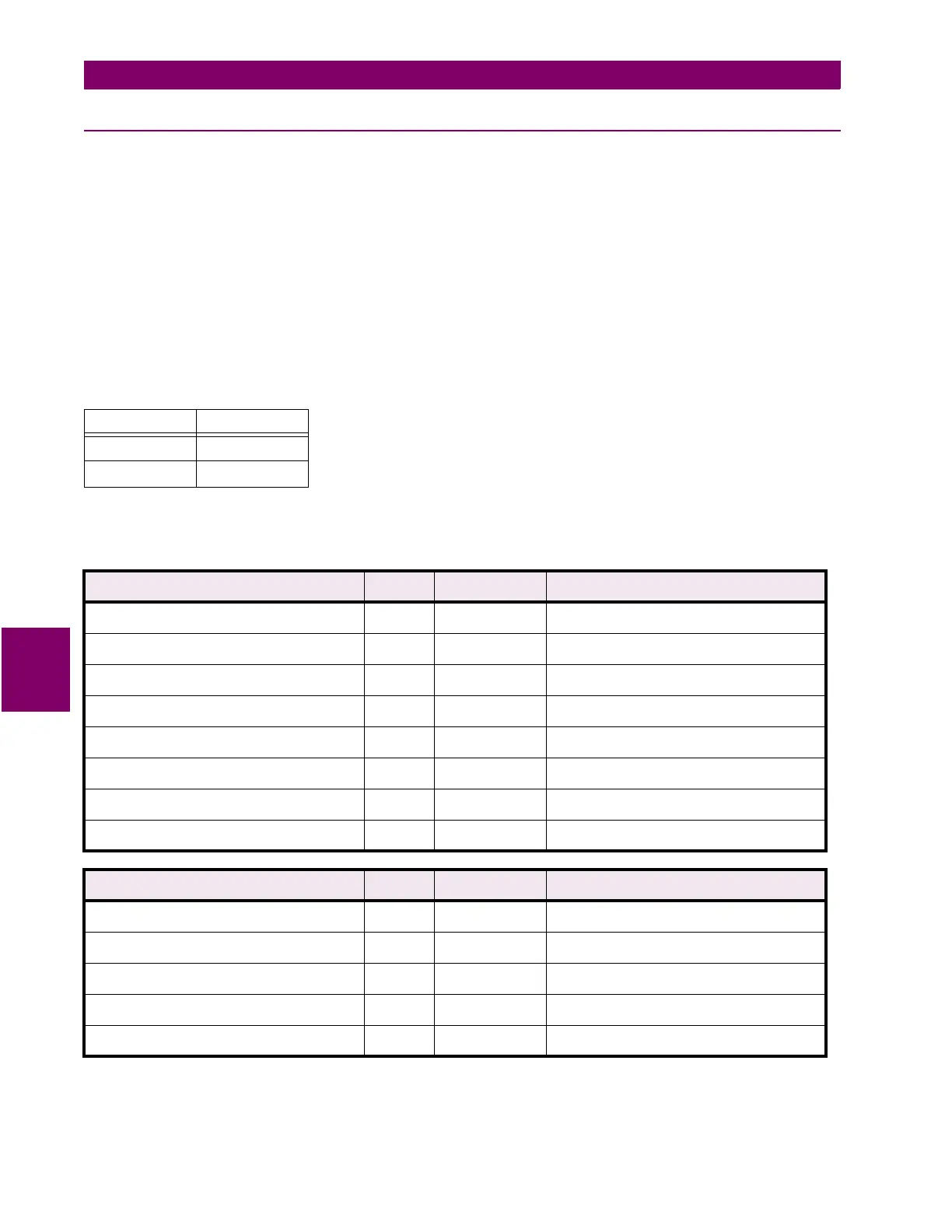6-12 MM2 Motor Manager 2
GE Power Management
6.2 MODBUS FUNCTIONS 6 COMMUNICATIONS
6
6.2.8 FUNCTION CODE 10H
Modbus Implementation: Preset Multiple Registers
MM2 Implementation: Store Multiple Setpoints
This function code allows multiple Setpoints to be stored into the MM2 memory. Modbus "registers"
are 16-bit (two byte) values transmitted high order byte first. Thus all MM2 setpoints are sent as two
bytes. The maximum number of Setpoints that can be stored in one transmission is dependent on
the slave device. Modbus allows up to a maximum of 60 holding registers to be stored. The MM2
response to this function code is to echo the slave address, function code, starting address, the num-
ber of Setpoints stored, and the CRC.
For example, consider a request for slave 17 to store the value 01F4 to setpoint address 1028 and
the value 2710 to setpoint address 1029. After the transmission in this example is complete, MM2
slave 17 will have the following setpoints information stored:
The master/slave packets have the following format:
Address Data
1028 01F4
1029 2710
Table 6–8: MASTER/SLAVE PACKET FORMAT FOR FUNCTION CODE 10H
MASTER TRANSMISSION BYTES EXAMPLE DESCRIPTION
SLAVE ADDRESS 1 11 message for slave 17
FUNCTION CODE 1 10 store setpoints
DATA STARTING ADDRESS 2 10 28 setpoint address 1028
NUMBER OF SETPOINTS 2 00 02 2 setpoints = 4 bytes total
BYTE COUNT 1 04 4 bytes of data
DATA 1 2 01 F4 data for setpoint address 1028
DATA 2 2 27 10 data for setpoint address 1029
CRC 2 33 23 CRC error code
SLAVE RESPONSE BYTES EXAMPLE DESCRIPTION
SLAVE ADDRESS 1 11 message from slave 17
FUNCTION CODE 1 10 store setpoints
DATA STARTING ADDRESS 2 10 28 setpoint address 1028
NUMBER OF SETPOINTS 2 00 02 2 setpoints
CRC 2 C7 90 CRC error code
